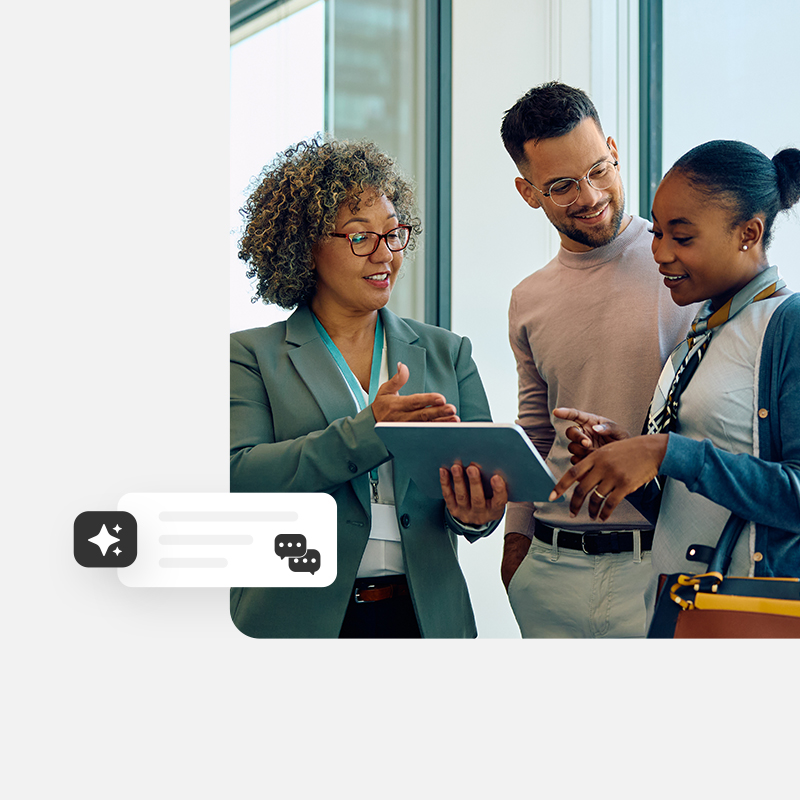In just a few years, the proliferation of people data and analytics has elevated HR from a traditionally administrative role to a true strategic partner — enabling better data-driven decisions around improved talent management, workforce planning, and overall organizational performance.
While the advances are exciting, an abundance of riches can also feel overwhelming. What analytics are most useful? How and where should HR start to mine this data? What should a people analytics dashboard look like and what are the considerations that go into building one versus buying one?
Let’s break down the components to provide a roadmap for action.
What is advanced analytics and why does it matter to HR?
Advanced analytics transcends basic data analysis by delving deeper into the predictive and prescriptive aspects of data interpretation. It extends beyond mere metrics to uncover patterns, correlations, and insights – some of them otherwise hidden — that drive strategic decision-making.
For HR, this means a profound understanding of the employee experience, from forecasting turnover trends to addressing engagement issues proactively, identifying high performers, and ensuring diversity and inclusion efforts are data-backed and precise. With advanced analytics, HR leaders can anticipate and strategize rather than react, positioning themselves as vital strategic advisors to the business.
Data challenges that HR faces
The proliferation of people data and analytics tools has not come without challenges. HR teams often grapple with determining which analytics will serve the business best, amidst an overwhelming abundance of available metrics.
The key issue lies in not just collecting numbers but leveraging the right data to inform decisions that lead to organizational success. Traditional HRIS metrics, often lagging indicators, provide a limited snapshot of the workforce and lack the nuance needed to navigate today’s complex HR landscape. Implementing people analytics provides HR with the insights to look at the precursors to issues such as productivity, engagement, and retention to better inform workforce planning and talent strategy.
How advanced analytics can help HR
Advanced analytics offers a solution by enabling HR professionals to look beyond surface-level metrics and to augment HR intuition. It allows for the analysis of robust performance management data that is both qualitative and quantitative — including manager-employee conversations, peer feedback, goal accomplishments, and employee surveys — to inform intelligent decisions. This comprehensive data approach enables HR to address a wide array of workforce-related issues effectively, transforming HR into a strategic advisor who can act quickly and decisively.
The ability to cross-correlate data means HR can uncover trends before they become problematic issues that impact retention, productivity, engagement, and DEI.

Approaches to developing an analytics dashboard
When considering the development of an advanced analytics dashboard, HR professionals face a pivotal decision: build or buy. Building a dashboard in-house offers customization and flexibility, allowing HR to tap into specific data sets, like those provided by performance management systems such as Betterworks. On the other hand, purchasing a ready-made dashboard can offer simplicity and speed. Regardless of the approach, it’s crucial to start simple, using available data, and then customize metrics as needed to align with strategic objectives. Our People Analytics ROI: To Build or To Buy guide shows you what factors to consider when deciding whether to build your own dashboard from scratch, use a generic BI tool, or purchase a people analytics tool.
Benefits of building your own dashboard versus buying
The choice between building your own dashboard or buying depends on several factors, including technical expertise, resources, and specific organizational needs. Building a custom dashboard allows for a tailored approach, ensuring that the metrics and insights directly align with the company’s strategic goals. However, this option requires a significant investment in time and technical resources. Buying a dashboard, conversely, offers a quick setup and predefined metrics, which can be an efficient solution for organizations looking to implement advanced analytics swiftly. Each approach has its merits, and the decision should align with the organization’s unique context and strategic priorities.
Take the next step in becoming a data-driven HR leader
The integration of advanced analytics into HR practices represents a significant leap forward in how organizations manage and understand their workforce. By effectively leveraging these tools, HR professionals can transition from administrative functions to strategic roles, driving organizational success through informed decision-making.
Whether opting to build a customized analytics dashboard or purchasing a ready-made solution, the key lies in utilizing the insights gleaned from advanced people analytics to inform strategic HR and business decisions.
Dive deeper into the possibilities of advanced analytics in HR by getting your free copy of 12 Advanced Analytics Ideas to Level Up Your HR Dashboard. This practical guide gives you a dozen visual examples of valuable people analytics that will help you get started on your journey.
Advance your journey with people analytics







